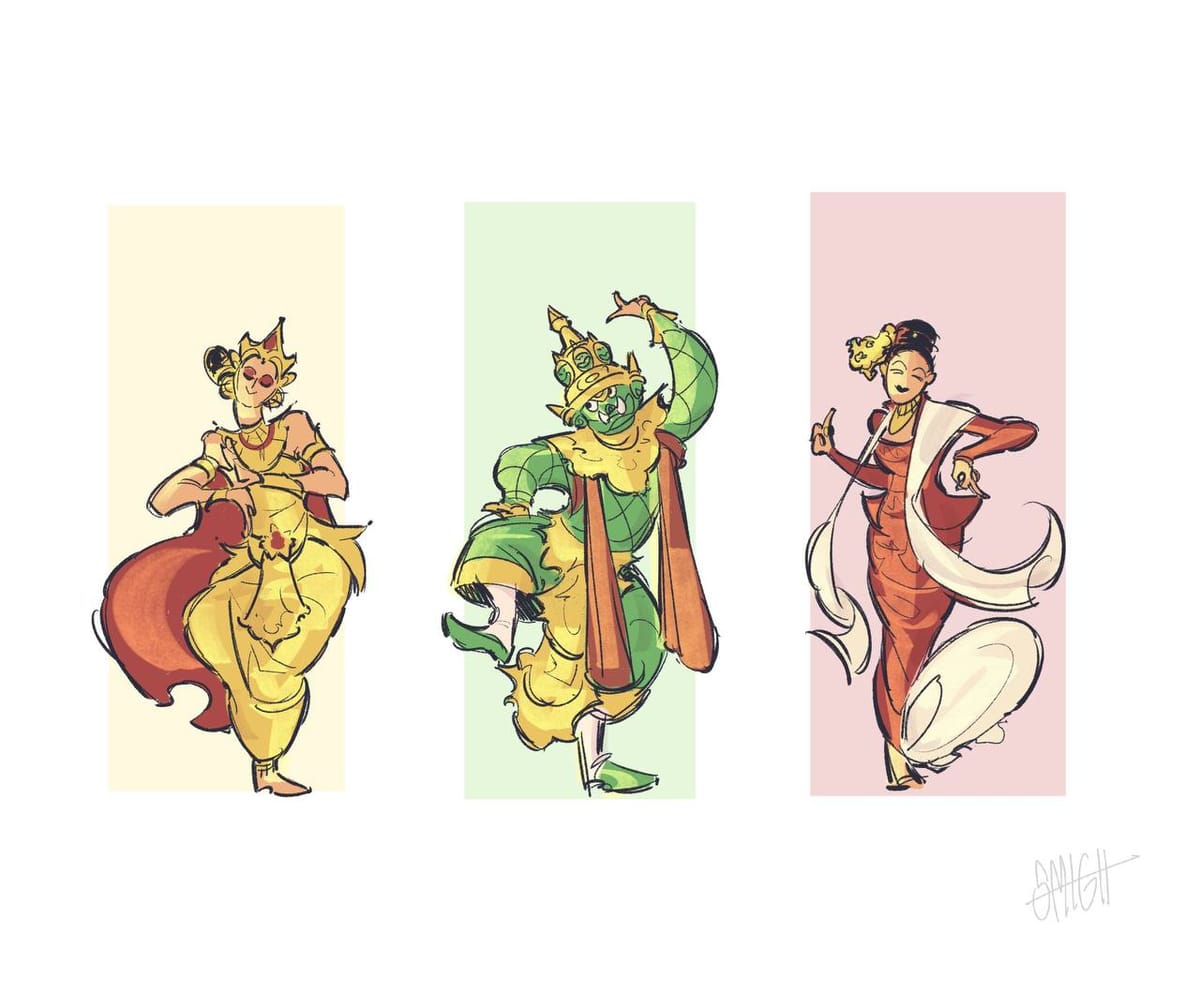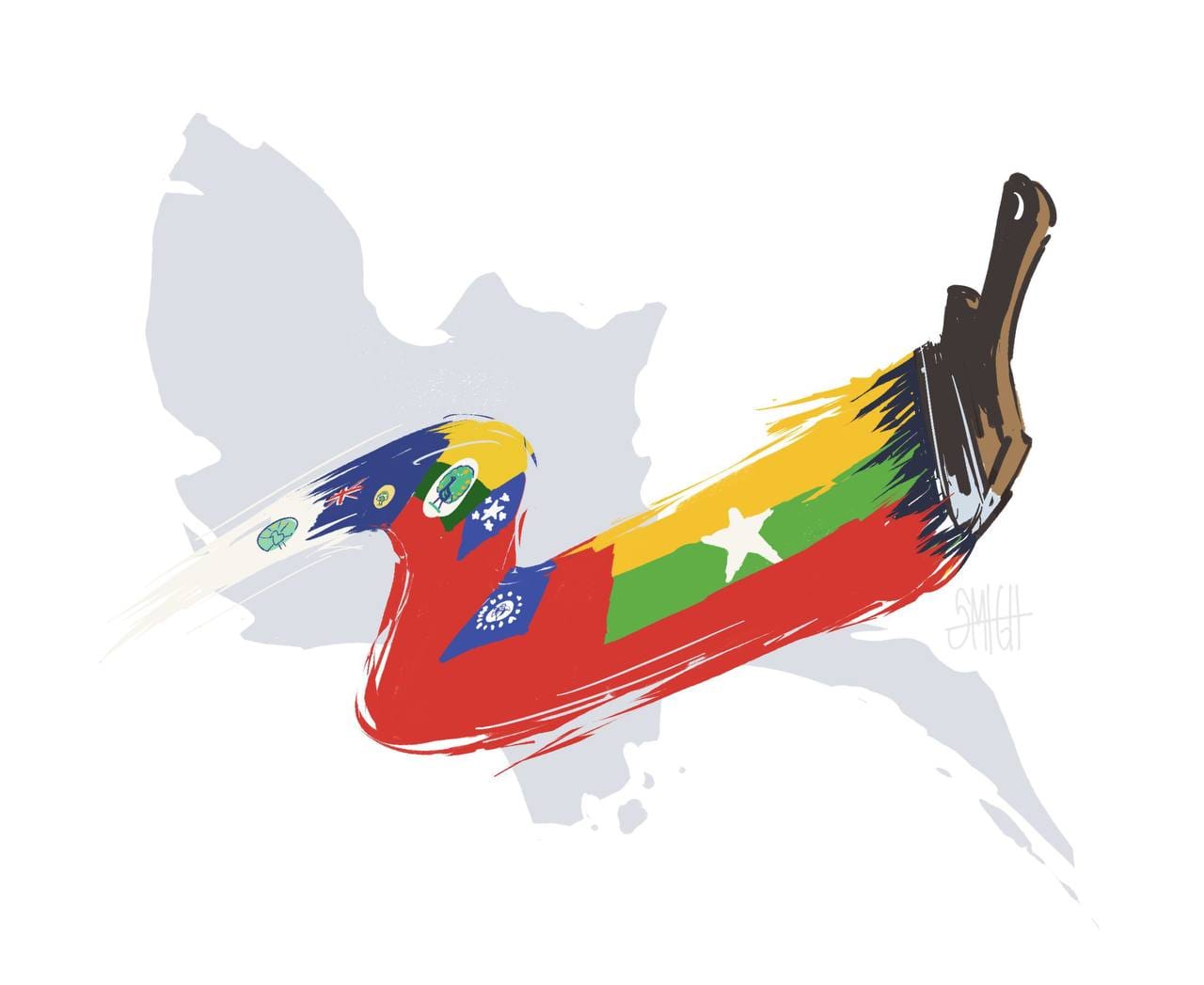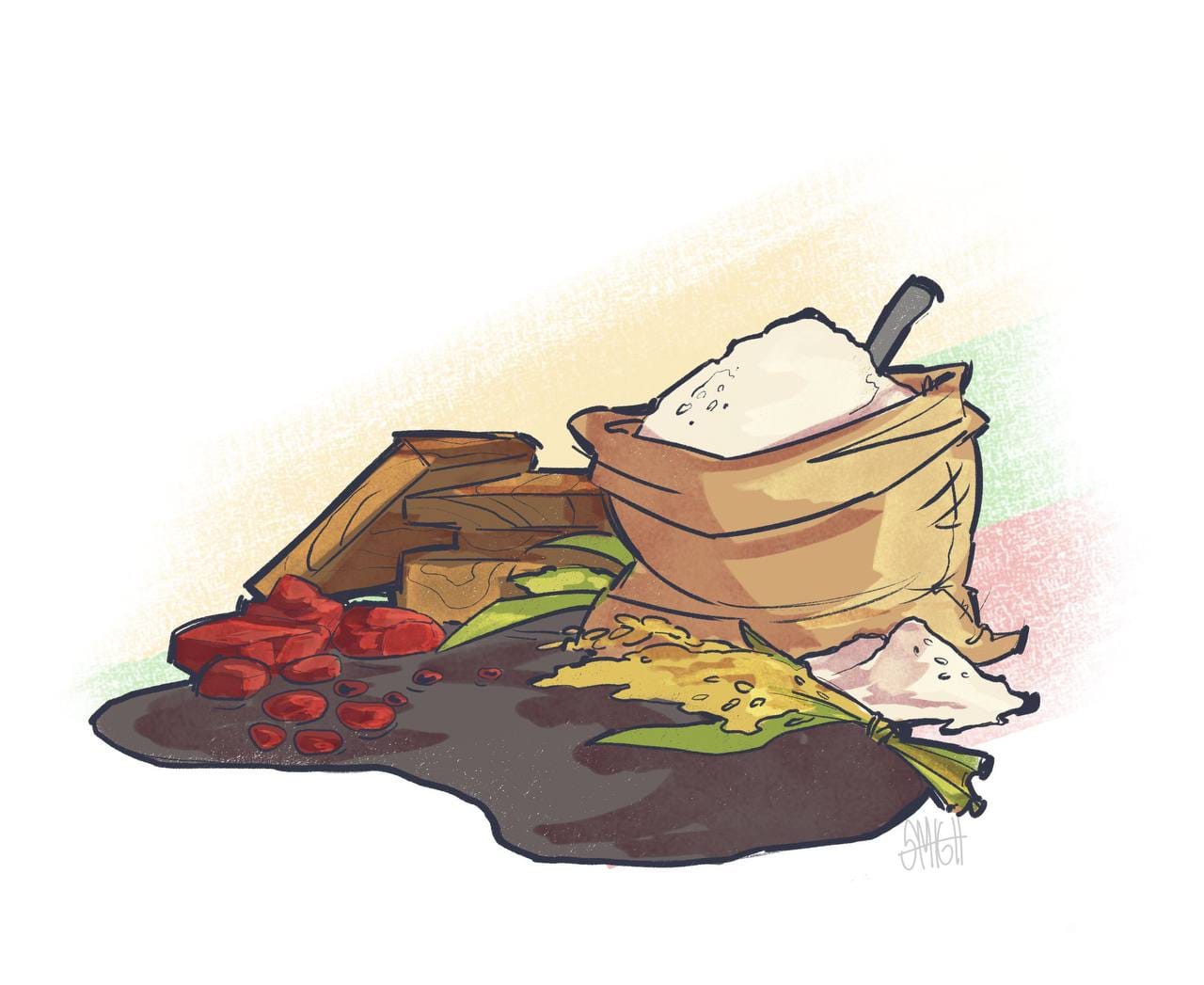
Introduction
Myanmar is a nation shaped by millennia of complex history, characterized by diverse ethnic groups, distinct languages, literary traditions, and religious freedoms.
Myanmar's culture is fundamentally Eastern, deeply influenced by both Hindu and Buddhist traditions. Geopolitically, it has evolved alongside two major civilizations - India and China - resulting in significant cultural exchange. Thailand has also played a notable role in Myanmar's historical narrative.
When discussing culture, one might ask: "What exactly is Myanmar culture?" In essence, culture encompasses the past, present, and future of its people. It's constantly evolving while maintaining its core identity. Thus, Myanmar culture includes everything the Myanmar people have done in the past, are doing in the present, and will shape in the future. It's expansive in scope.
Defining Myanmar culture in a single framework is challenging due to its complexity and diversity. Therefore, this article presents essential aspects of Myanmar culture that everyone should know.
Religion
Buddhism is believed to have reached Myanmar as early as the 1st century BCE, according to historical researchers. Traditional accounts tell of two merchants who met the Buddha and, after paying homage, built a stupa on what is now Yangon's elevated ground - the present-day Shwedagon Pagoda. Three hundred years after Buddha's passing, during King Asoka's Buddhist mission, monks were sent to Myanmar to spread the dharma. This is how Buddhism first arrived in Myanmar, according to ancient records.
However, Myanmar didn't immediately embrace Theravada Buddhism in its pure form. Early religious practices were a mixture of Hinduism, Mahayana Buddhism, nat worship, and ascetic traditions. In the 11th century CE, King Anawrahta conquered Thaton, a Mon kingdom, and obtained the Tripitaka (Buddhist scriptures). Historical records indicate that he brought both the scriptures and Shin Arahan from Thaton. Bagan then became the center of Theravada Buddhism in Myanmar. This marked the beginning of Theravada Buddhism as practiced by the majority of Myanmar's population today.
Literature
Myanmar writing emerged during the Bagan period in the 12th century CE. Before this, Pali and Sanskrit were the primary written languages. As Buddhism gained acceptance through Pali literature, indigenous scripts like Pyu and Mon already existed. Myanmar script developed from these foundations. The Myazedi inscription from 1113 CE features writing in four languages: Pyu, Mon, Myanmar, and Pali.
Let's explore how Myanmar culture, originating from Buddhist influences, has evolved from the era of city-states to the present day.
Traditional Dress
Myanmar traditional dress reflects adaptations to the local climate and environment. Unlike many other countries, Myanmar people continue to wear traditional clothing in daily life. Both men and women wear longyi, a tubular garment wrapped around the waist. The male version is called pasoe, while the female version is htamein. The longyi is a fundamental part of Myanmar cultural identity. The national dress consists of pasoe and taikpon (male jacket) for men, and htamein and eingyi (fitted blouse) for women. A perfect example of Myanmar women's traditional dress can be seen in how Nobel laureate Daw Aung San Suu Kyi dresses.
Actually, Myanmar's national costume isn't purely indigenous. It shows Indian and Chinese influences. The longyi and women's eingyi reflect Indian cultural impact, while the taikpon derives from Chinese fashion. Myanmar people only began wearing longyi, taikpon, and eingyi after the fall of the monarchy, roughly 100 years ago.
Before that, Myanmar people wore loose cloth wrapped around their bodies. Men wore "taungshay" and women wore "htaingmathein." Both genders wore open-front jackets called "yinphon." Today, these styles are mainly seen at traditional wedding ceremonies.
Ancient Cities
Pyu Ancient Cities
While Myanmar is often associated with Bagan, there are three older Pyu cities: Halin, Beikthano, and Sri Ksetra. Historical evidence suggests these first urban settlements in Myanmar flourished between the 2nd century BCE and 9th century CE.
Beikthano is located 12 miles west of present-day Taungdwingyi. Halin is in Shwebo, while Sri Ksetra is in Pyay, Bago Region.
These early Buddhist city-states left behind Buddhist architecture, religious structures, Pyu language inscriptions, metal-based currency, and other cultural artifacts. Representing regional cultural transformation, these three Pyu ancient cities were inscribed on UNESCO's World Heritage List in 2014.
Bagan
Bagan, with over 2000 temples scattered along the eastern bank of the Ayeyarwady River, flourished from the late 9th to 13th centuries CE. It was the capital of the first unified Myanmar kingdom. The mural paintings, stucco work, stone inscriptions, sculptures, and architectural mastery of Bagan's temples demonstrate the sophisticated cultural achievements of the period. Built in the 12th century, Bagan predates Angkor Wat despite their architectural similarities. Bagan culture is distinctly Myanmar, and citizens consider it a symbol of national identity. It's also internationally renowned and was inscribed as a UNESCO World Heritage site in 2019.
Inwa
Inwa (or Ava) was founded in 1364 CE after the fall of the Bagan Empire. It served as the royal capital during three dynasties: Inwa, Nyaungyan, and Konbaung, resulting in diverse architectural styles. The city was protected by three fortifications: Singkyone, Sagaing, and Pinya. Notable structures include the Bagaya Monastery built with 267 teak posts and the Maha Aungmye Bonzan Monastery (known as Me Nu's Brick Monastery), which exemplifies Myanmar architectural artistry. The ancient city remains a popular destination for domestic and international tourists.
Royal Palaces
Two palaces hold particular cultural and historical significance in Myanmar.
Kanbawzathadi Palace
Built by King Bayinnaung in 1553, Kanbawzathadi Palace is located in Bago, about an hour's drive from Yangon. Once a magnificent golden palace, it was burned and buried for over 400 years following the fall of Hanthawaddy. After Myanmar's independence, excavations began in 1990, revealing 16th-century cultural artifacts including carved wooden ornaments and palace pillars. The palace was reconstructed in 1994 based on its original design. It's particularly popular among Thai tourists who revere King Bayinnaung.
Mandalay Palace
Known in Myanmar as "Mya-nan-san-kyaw Shwenandaw," this palace in Mandalay was where the last Myanmar king, Thibaw, was captured by British colonial forces and exiled to India, ending the Myanmar monarchy.
The palace, surrounded by a moat on all sides, was built between 1857 and 1859 by King Mindon, King Thibaw's father. There's a controversial legend about human sacrifices during its construction. The palace combines architectural brilliance with cultural heritage and historical significance. Its grandeur inspired Rudyard Kipling's famous poem "Mandalay."
This historically significant palace suffered considerable damage during World War II battles between Japanese and Allied forces. It was later restored and continues to stand as both a symbol of Myanmar culture and a reminder of the monarchy's impact.
Traditional Crafts
Myanmar Lacquerware
"Panyun" (lacquerware) is one of the ten traditional Myanmar crafts, though some debate its indigenous origins. Regardless, lacquerware has been an established part of Myanmar culture for centuries.
While some believe lacquerware was used in Bagan as early as the 11th century CE, others suggest it began in the 16th century when King Bayinnaung brought Shan lacquer artisans from Chiang Mai, Thailand. Lacquerware refers to items coated with lacquer.
The craft is entirely handmade and requires extreme precision. It maintains strict adherence to traditional methods. Today, the main centers for lacquerware production are Myinkaba village and New Bagan. These locations showcase the splendor of Myanmar lacquerware.
Pathein Umbrellas
The Pathein umbrella, combining beauty, elegance, and pure Myanmar style with traditional painting, is a cultural icon with over 100 years of history. After King Thibaw's exile, royal umbrella craftsman U Shwe Sar relocated from Mandalay to Pathein in Lower Myanmar's Ayeyarwady Region for livelihood. The umbrellas began production there, hence the name.
Made primarily from wood and bamboo, Pathein umbrellas use entirely natural materials. They're completely handmade without machinery. They're more durable than Japanese and Chinese traditional umbrellas and are waterproof. These traditional umbrellas are still made using the same methods from 100 years ago. They're a must-buy souvenir for foreign tourists and represent authentic Myanmar craftsmanship. International visitors particularly appreciate the umbrellas' varied colors.
Lotus Fabric
In Inle Lake, Shan State, where people row boats with their legs, you can find the world's most expensive lotus fabric. While Vietnam began producing lotus fabric in 2007, Myanmar has been making it since the early twentieth century. It was first produced by Daw Kyar Oo from Kyaingkhan village in Inle Lake.
The craft of making lotus fabric, which comes exclusively from the Padonma lotus, is extremely detailed and labor-intensive. Women make up over 80% of the workforce in lotus fabric production. It's a natural-based economic activity passed down through generations of local women. Italy's famous designer Pier Luigi Loro Piana uses Myanmar lotus fiber in his Loro Piana Lotus Flower textiles.
Cultural terminology categorizes tangible elements like artifacts as material culture, while intangible elements like language, thoughts, customs, dress, beliefs, and traditional festivals are considered non-material culture.
Let's explore Myanmar's non-material cultural elements.
Myanmar Dance
Culture encompasses artistic elements including singing, dancing, playing instruments, and performing arts. Myanmar dance involves the whole body - feet, hands, head, and waist. There are solo performances (tepantin), male-female duets (nyipargo), and group dances like court maiden dance and yein dance.
There's the young prince dance performed to drums and percussion, and rural comedy dances like U Shwe Yoe and Daw Moe. Anyeint performance combines musicians, actresses, actors, and comedians in harmonious shows.
The Myanmar marionette theater is a unique cultural art form. Puppets are manipulated with strings to perform. Myanmar marionettes represent the earliest form of entertainment art in Myanmar, with a long history and complex puppetry techniques. It remains a rare but preserved cultural practice.
In instrumental music, the Myanmar traditional orchestra (Saing) authentically represents Myanmar music. Like Western orchestras, it follows specific traditions and techniques. The Saing is essential in ceremonies and nat festivals. The urge to dance upon hearing Saing music is almost instinctive for Myanmar people.
Myanmar performing arts share some connections with neighboring Thailand. Drama pieces like the Ramayana and Enao, and musical styles like Yodaya, have Thai origins.
Besides Myanmar traditional dances, ethnic groups maintain their own distinct dance traditions. These include the energetic Karen Don dance, rhythmic Chin bamboo dance, graceful Shan Kinari dance, Rakhine oil lamp dance, Kachin Manau dance, Mon duet dance, and Kayah flagpole dance.
Thanaka
Until recently, seeing thanaka on faces, regardless of gender or age, immediately identified someone as Myanmar. This face paste remains integral to Myanmar identity. Myanmar people have used thanaka for about 2000 years. While the thanaka tree grows in other Southeast Asian countries, the practice of applying it to the face is unique to Myanmar.
For Myanmar people, thanaka symbolizes purification. It's used for beauty, health, and religious ceremonies. Despite changing times, the tradition of wearing thanaka hasn't diminished. It's a uniquely Myanmar cultural practice. Thailand now produces thanaka-based products, leading Myanmar to register thanaka as an intangible cultural heritage with UNESCO to protect its cultural ownership.
Festivals
Thingyan
Thingyan is Myanmar's traditional New Year festival, celebrated simultaneously with Thailand's Songkran. Based on Buddhist and Hindu traditions, these festivals share similar customs. Myanmar Thingyan consists of several days: A-kyo, A-kyat, A-kya, A-tet, and New Year's Day.
During Thingyan, people welcome the Sun God with water-offering ceremonies, splash water on each other, make merit, and perform acts of kindness like animal release. Visit anywhere in Myanmar during this April festival, and you'll find alms-giving ceremonies, palm leaf pavilions, and everyone celebrating joyfully. The festival is all-inclusive.
Rakhine people observe the tradition of applying thanaka water to Buddha images during Thingyan, while Shan people build sand pagodas. Different regions maintain their own Thingyan customs and traditions. Thingyan is deeply embedded in Myanmar culture. People believe the New Year truly begins only after experiencing Thingyan water.
Taunggyi Fire Balloon Festival
In November's cool season, the tradition of launching massive fire balloons into the sky represents an important Shan cultural heritage. Colorfully decorated balloons carrying lights and fireworks are launched as offerings to the Buddha. The festival takes place in Taunggyi, with separate day and night events.
Daytime balloons, called "Seinnapan," focus on artistic balloon crafting. Night balloons, "Nya-mee-gyi," are larger and decorated with lights and fireworks. These night balloons are considered the festival's highlight. Team spirit is crucial to the festival. Groups work year-round to ensure their balloons launch perfectly. Each balloon launch requires about 100 people.
This isn't just about determination and effort. It represents Shan people's national spirit and cultural heritage. Watching these diverse balloons with their colorful lights and fireworks against the cool night sky, accompanied by Shan drums, creates an incomparable experience. Both domestic and international tourists particularly enjoy this festival.
Conclusion
Culture is often defined as "The Way of Life." It encompasses everything a person or human race encounters from birth to death. In short, it's the lifestyle of a people. Studying a culture means examining both its past and present. A culture's characteristics, changes, vitality, and decline reflect both a nation's efforts and its immutable history.
Myanmar is rich in both tangible and intangible cultural heritage. This small, elongated country is home to over 130 ethnic groups, with diverse cultural practices from north to south. Study Myanmar culture. Understanding a people's culture is the best way to understand them, and understanding leads to peace.
By Noe Thit Moe (Y3A)
Read More:
 Build Myanmar - MediaBuild Myanmar Staff
Build Myanmar - MediaBuild Myanmar Staff
 Build Myanmar - MediaY3A
Build Myanmar - MediaY3A
Build Myanmar-Media : Insights | Empowering Myanmar Youth, Culture, and Innovation
Build Myanmar-Media Insights brings you in-depth articles that cover the intersection of Myanmar’s rich culture, youth empowerment, and the latest developments in technology and business.
Sign up for Build Myanmar - Media
Myanmar's leading Media Brand focusing on rebuilding Myanmar. We cover emerging tech, youth development and market insights.
No spam. Unsubscribe anytime.
Sign up now to get the latest insights directly to your mailbox from the Myanmar's No.1 Tech and Business media source.
📅 New content every week, featuring stories that connect Myanmar’s heritage with its future.
📰 Explore more:
- Website: https://www.buildmyanmarmedia.com/
- Facebook: https://www.facebook.com/buildmyanmar
- YouTube: https://youtube.com/@buildmyanmarmedia
- Telegram: https://t.me/+6_0G6CLwrwMwZTIx
- Inquiry: info@buildmyanmar.org
#BuildMyanmarNews #DailyNewsMyanmar #MyanmarUpdates #MyanmarNews #BuildMyanmarMedia #Myanmarliterature #myanmararticle #Updates #Insights #Media
